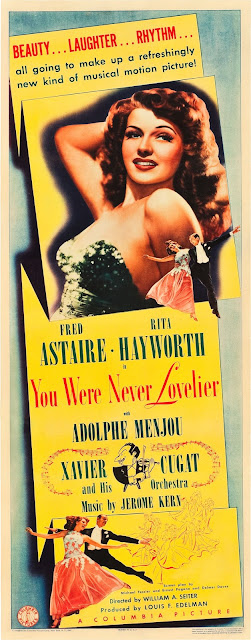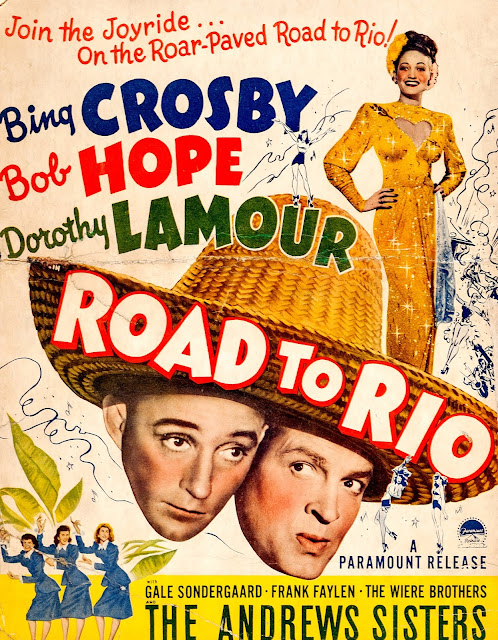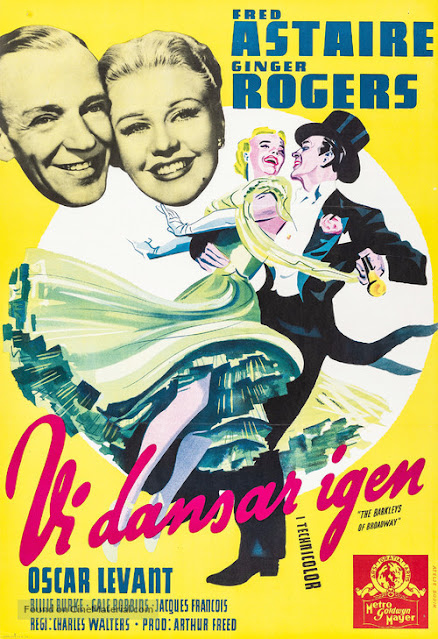Roger Corman's The Little Shop of Horrors (1960)
When The Little Shop of Horrors begins, everything seems to be fine and normal and sane. We're taken to Los Angeles's skid row, where Gravis Mushnick (Mel Welles), a perpetually frustrated man, runs a little flower shop with the help of his employees, Audrey (Jackie Joseph) and the bumbling Seymour (Jonathan Haze). It's all rather routine, until Burson Fouch (Dick Miller) comes in, orders a bouquet, takes out a salt shaker from his pocket, and proceeds to eat the flowers. For the rest of its slim 72 minutes, Little Shop of Horrors doesn't let up in its weirdness, nor does it stop surprising you.
When Seymour is fired by Mushnick, he tries to prove his worth by bringing in the plant he cross-bred. Named Audrey Jr. due to Seymour's crush on his co-worker, the plant is interesting enough and Mushnick is desperate enough that he gives Seymour one week to improve sales by enticing people to come in to see Audrey Jr. When the plant appears to die within hours, Seymour stays up all night trying to figure out how to save it. The answer unexpectedly comes when he cuts himself on another plant's thorns and some of his blood is absorbed by Audrey Jr. The plant begins to revive and Seymour is shocked: "I guess there's no accounting for people's tastes!"
When Seymour is fired by Mushnick, he tries to prove his worth by bringing in the plant he cross-bred. Named Audrey Jr. due to Seymour's crush on his co-worker, the plant is interesting enough and Mushnick is desperate enough that he gives Seymour one week to improve sales by enticing people to come in to see Audrey Jr. When the plant appears to die within hours, Seymour stays up all night trying to figure out how to save it. The answer unexpectedly comes when he cuts himself on another plant's thorns and some of his blood is absorbed by Audrey Jr. The plant begins to revive and Seymour is shocked: "I guess there's no accounting for people's tastes!"
And it really is. That night, Seymour hears his plant gruffly demanding to be fed. Its cries of "Feed me!" send Seymour out on walk by the train tracks as he tries to figure out how to satisfy the bloodthirsty Audrey Jr. Fate intervenes when out of frustration, Seymour throws a rock and accidentally hits a man. Disoriented, the man stumbles in front of an oncoming train and is killed. Freaked out, Seymour attempts to dispose of the body in different places but he is continually scared off, so he takes it to the shop. As he wraps his head around the situation, Audrey Jr. sniffs the body and declares it food. Reluctantly, Seymour feeds the plant the gruesome body parts, unaware that Mushnick sees it through the window.
Before going to the police, Mushnick decides to talk to Seymour first. When he arrives to the shop the next morning, though, the plant has become even more magnificent and business is thriving. Mushnick asks Seymour just what kind of plant Audrey Jr. is, revealing that it is half-Venus flytrap. Because the flytrap only feeds three times in its life and because Seymour believes that Audrey Jr. might not be hungry anymore, Mushnick is seduced by the shop's success and foregoes speaking to the cops. He'll soon realize what a mistake that was...
Despite his monstrous creation, Seymour remains a sympathetic character. He isn't malicious or fueled by greed. Money would be nice, yes, but Seymour would rather have the love of others. He is the sole caretaker for his hypochondriac of a mother, a woman who states that Seymour will never get married because she must be his only priority. His subsequent killings for Audrey Jr. are complete accidents. At film's end, when everything starts to crumble, Seymour makes a sacrifice that proves his nobility and acts as his redemption for conceiving Audrey Jr. in the first place.
Little Shop of Horrors is an undeniably black comedy. While it is rooted in tragedy, there are some genuinely funny moments that made me laugh out loud. For instance, when Mushnick confronts Seymour about Audrey Jr., he goes "You wouldn't lie to your father?!" Forgetting that his boss insisted he be called "Dad," Seymour asks incredulously "My father came home?!" "No! Me!" Mushnick replies.
One of the weirder aspects of the film is the random narration. You're never sure when it is going to pop up, and you don't even know who is narrating until 40 minutes in. After the mysterious disappearances of Seymour's first and second victims, Detectives Fink and Stoolie are discussing the cases in Fink's office. With bored voices and absolutely deadpan expressions, the men are caricatures of the typical cop figure that you find in horror or mystery films. They remain as monosyllabic as they can and betray no emotion. Coupled with their dialogue, it makes for a very funny, dark joke. Example:
Fink: "How are the kids?"
Stoolie: "Lost one yesterday."
Fink: "Lost one, eh? How'd that happen?"
Stoolie, as he lights a cigarette: "Playing with matches."
Fink: "Well, those are the breaks."
When the detectives go to Mushnick's shop in the next scene, the narrator is finally revealed to be Det. Fink, who dryly introduces himself to us although we just met him in the previous scene: "My name is Fink, Sgt. Joe Fink. I'm a Fink." If you're up on your vocab, you'll recall that "fink" and "stoolie" mean a snitch or a whistle-blower. We're not supposed to side with the cops here, clearly.
The man who produced and directed Little Shop is the legendary Roger Corman, the king of low-budget B movies. In 1960, Corman had yet to direct the films that would truly make him famous: his Technicolor Edgar Allan Poe adaptations with the marvelous Vincent Price. Little Shop came about when Corman realized he would have a few days left before the sets for his previous flick, A Bucket of Blood, were to be torn down. Originally titled The Passionate People Eater, the movie's cast rehearsed for three weeks before filming began. Principal photography took all of two days and one night. Dick Miller, the fabulous protagonist of A Bucket of Blood, was offered the role of Seymour, but he wanted to take the more minor role of customer Burson Fouch.
Besides being known for spawning a successful musical, Little Shop is also a footnote in the career of Jack Nicholson, who was mentored by Corman. (Other people he helped in the beginning of their careers include Francis Ford Coppola, Ron Howard, James Cameron, Martin Scorsese, and Peter Fonda.) In his early 20's, Nicholson first worked with Corman as the lead in The Cry Baby Killer, but when he tried to get the role of Seymour, the director felt he wasn't experienced enough. Nicholson then went for the character of Wilbur Force, a masochistic patient at a dentist's office. "I went in to the shoot knowing I had to be very quirky because Roger originally hadn't wanted me," the actor recalled. "In other words, I couldn't play it straight. So I just did a lot of weird shit that I thought would make it funny."
When Seymour goes to a sadistic dentist for a toothache, the dentist winds up being food for Audrey Jr. after they have a brawl. With the dentist dead on the floor and a patient named Wilbur Force in the waiting room, Seymour hides the body and pretends to be the dentist. Force is so excited for his appointment, Seymour is unable to get rid of him and goes through with it. Force may be the biggest oddball out of the whole cast. He practically salivates as he reads Pain Magazine in the waiting room. He has a long list of dental problems that are probably
fake, just so he can spend more time in the chair. He begs for the drill and no Novocaine because it "dulls the senses." He even encourages Seymour to pull his teeth. By the time Force leaves, his smile is horrendous, but he may be the most satisfied patient a dentist ever had.
According to Nicholson, "we never did shoot the end of the scene. This movie was pre-lit. You'd go in, plug in the lights, roll the camera, and shoot. We did the take outside the office and went inside the office, plugged in, lit and rolled. Jonathan Haze was up on my chest pulling my teeth out. And in the take, he leaned back and hit the rented dental machinery with the back of his leg and it started to tip over. Roger didn't even call cut. He leapt onto the set, grabbed the tilting machine, and said 'Next set, that's a wrap.'" Nicholson and Corman collaborated a total of six times, four of those times as actor/director, once as actor/producer, and once as writer/director.
After the movie's initial theatrical run, Corman decided that Little Shop probably wouldn't bring in a lot of money, so he didn't copyright it, allowing the movie to fall into the public domain. Because of that, you can watch the whole thing here on YouTube. I haven't seen the musical version, so I can't exactly say what the differences are, which is better, etc. However, I hope that those of you who enjoy the musical will give its original a chance.
About four years ago, I was given the chance to see Roger Corman in person during his visit to the IU Cinema. I sat just four rows away from the stage, but I stupidly didn't take any photos. Mr. Corman was amazing -- his mind and his memories were still sharp, and you could tell he just loves filmmaking. The only part of the lecture that disappointed me was the guy who was leading it. He seemed more interested in Corman's role as a producer than as a director, so we didn't get to hear a lot about that fascinating portion of his career. To fix this, during the brief Q&A portion, I was dying to ask Corman about working with Vincent Price, but the man leading the lecture ignored me over and over. I've never forgiven him, as you can tell.
If you're interested in seeing more of Corman's films, you can often find them on YouTube. His work is often fun and ridiculous, in the best sense of the word. He is just really extraordinary. Recently, he produced the flick Sharktopus vs. Pteracuda, which has an incredible, hilarious cameo from Conan O'Brien that you can see in full here (warning: graphic). You can also see a wonderful interview between Corman and Conan here. And finally, check out these clips of Martin Scorsese and Ron Howard discussing the director/producer here.
__________________
This is my minor contribution to the Here's Jack Blogathon, a celebration of the actor for his birthday. Check out the other entries here.




















I had no idea Roger Corman was responsible for mentoring so many people. Very impressive! Have not seen this film, but it sounds pretty hilarious. And Jack Nicholson sounds like he plays truly the oddest dental patient of all time! :)
ReplyDeleteYes, Wilbur Force is quite the unique character. When you see it, you'll think "Of course Jack Nicholson played this guy."
DeleteI'm continually fascinated by Corman. He really should be better known to today's audiences. I mean, if Martin Scorsese et al. are singing his praises, there's obviously something to admire there.
Jack Nicholson looks SO YOUNG in those images you posted. I almost didn't recognize him!
ReplyDeleteI'm not a huge fan of the remake of this film, but this 1960 version sounds like the one to watch. I also didn't realize Roger Corman directed this film. Look at all these things I'm learning from your blog!
I've kind of stayed away from the remake, to be honest. Funnily enough, one of my jokes with my dad is the phrase "Feed me, Seymour!" but I didn't even know where that came from until years later.
DeleteI can't say that the original Little Shop is a favorite, but I found myself appreciating it much more during my most recent viewing. It's definitely an interesting movie, and I hope you enjoy it.
Man I love this movie and Jack even tho it was a bit part was awesome!
ReplyDeleteYeah, even though it's only really one scene, you never forget it! Thanks for reading!
DeleteThanks for bringing this to my blogathon - so much information on Jack, this movie and behind the scenes x Gill at Realweegiemidget Reviews x
ReplyDelete